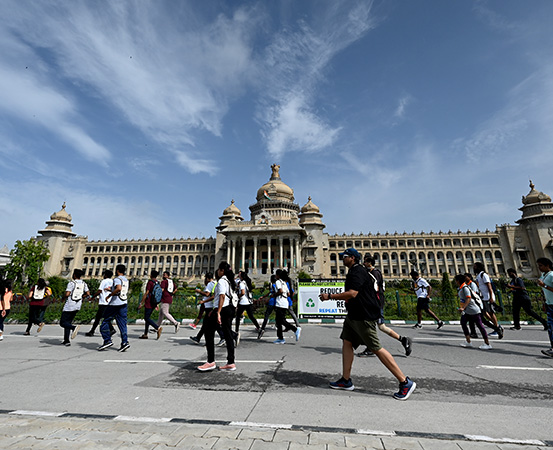
A runner’s high is a feeling that runners experience during or after a run. The runner feels euphoric or elated probably because of his sense of satisfaction or accomplishment. This feeling is caused by the endorphins released in the brain during running. The endorphins released activate the part of the brain that releases a feel-good chemical called dopamine. A combination of dopamine and endorphin release is what causes this feeling of elation popularly known as the runner’s high.
A runner can experience this feeling at different times while running. Many might feel elated that they have run so far and have just a little more to go to achieve their target. “I felt something like that after which I was able to enjoy the race. This has happened often when running in natural surroundings. In the beginning, I sort of struggled with setting my pace. Once I found my rhythm, I felt very energetic and had a sense of accomplishment. I felt as though I could keep running and it gave me tremendous happiness,” says David Premnath, the 1976 national champion, who also represented India in the 4×400 metres relay at Tehran in the 1974 Asian Games and won a silver.
“I always felt pleasant after running for some distance. For me, that was after the first six or seven kilometres. As you prepare for a marathon, you run long distances. Whether I ran 15 or 20 kilometres, it was only after the initial seven that I felt like moving well. Until then, it was a sort of punishment. There are no easy kilometres in running and every distance needs great effort but then one must feel easy and relaxed so that one does not feel tired or lethargic. That sense of relief came after running the first seven kilometres or so,” opines Madras Engineer Group (MEG) marathoner K Jairaj.
What triggers runner’s high?
Most athletes and runners are unaware of the scientific or medical reasons behind the sense of elation that the release of these neurotransmitters causes. But yes, they do have that feeling, nevertheless.
“The human body releases chemicals known as endorphins during physical activity. They interact with the receptors in the brain and reduce the pain caused by the exercise. Just like morphine, endorphins also trigger a positive feeling. Endorphins act as analgesics, which means they diminish the perception of pain and they also act as sedatives. They are manufactured in the brain and other parts of the body. Regular exercise has been proven to reduce stress, anxiety, improve sleep and one’s self-esteem,” says Dr Pralay Majumdar, CEO, Centre for Sports Science, Govt of Karnataka.
“Beta-endorphins are those that give you relief from stress and reduce pain. Beta-endorphins have a stronger effect than morphine. They act as messengers in your body. They attach to your brain’s opioid receptors and carry signals in the nervous system,” adds Dr Majumdar.
“Dopamine is another neurotransmitter. The release of dopamine affects your mood. Endorphins boost the release of dopamine. People with less endorphins may go into depression. This is because of a lack of dopamine,” says Aashish Kushwaha, a fitness expert and massage specialist from Bengaluru.
“But in some people, there may be an endorphin deficiency. People who feel depressed, anxious, impulsive or have improper sleep are those who do not produce enough endorphins. I always advise people to be cheerful and positive in their outlook. This leads to a change of mood which in turn leads them to be more energetic and fitter. This automatically leads to the release of endorphins and can give a person that feeling of satisfaction which was not there before,” Aashish adds.

















